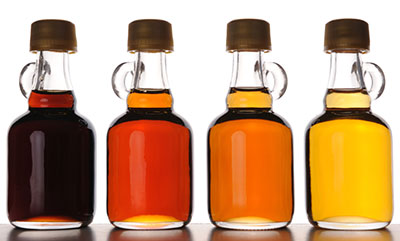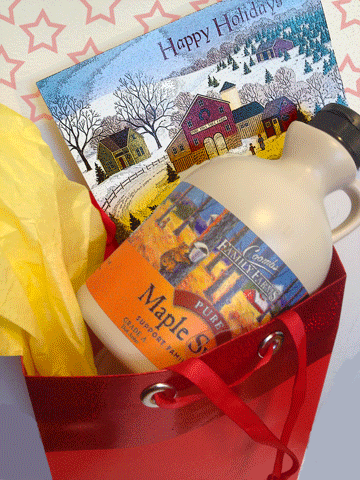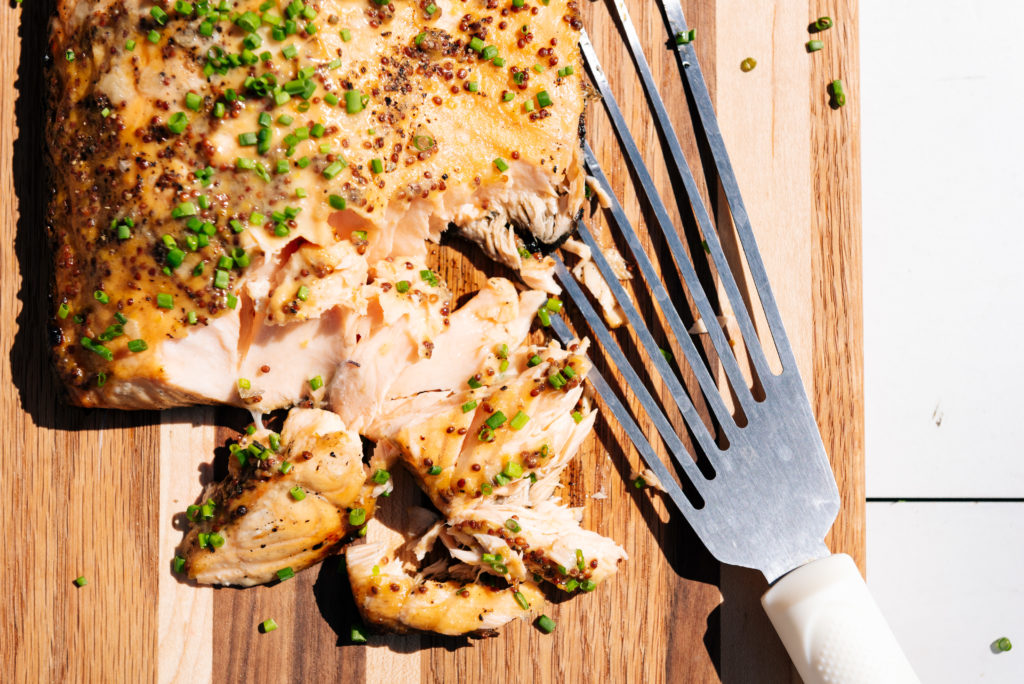
Since the maple industry’s beginning, maple producers within the United States, Vermont, and Canada have each used different rules, different grades, and different terminology to describe their products. This fragmentation led to industry challenges and increased consumer confusion. New legislation is about to change all this. To understand the reason for this coming change, let’s take a look at the current maple syrup grading system around the world.
Different grades of Maple syrup are produced at different points during the sugaring season. The lighter syrups are harvested during the colder, earlier parts of the season, while the darker syrups are made later in the season when the weather is warmer. The darker the color, the more powerful the maple flavors. Grading maple syrup has always been based on translucence, density, and flavor; this will continue under the new maple syrup grades. Grading kits (glass bottles with color breaks) will continue to be used to help determine the new maple grades. So, if the fundamental grading rules and tools have existed across markets, why were the grades different?
Each regional maple market had the ability to define maple grades based on pre-defined ranges of translucence and density. With every light transmission range, different markets assigned different grade definitions. For instance, if syrup had a light transmission of between 60.5% and 44.9%, it would be designated a No. 1 Light/Grade A or an A syrup in Canada, but a Grade A Medium Amber in the United States. These terminology differences were not only confusing to the average consumer, but the “common language” absence was also an obstacle to export market continuity.
 With its proposed maple syrup grade changes, the International Maple Syrup Institute (IMSI) is attempting to correct these discrepancies and help end consumer confusion. The proposal will create two primary maple syrup grades based on color and flavor profiles. Our Maple Syrup Grades page illustrates the new maple grades more clearly, including older grade flavor comparisons. This unified international grading system is intended to strengthen the maple industry since all markets will now follow the same rules and terminology. This will help Vermont maple producers compete more effectively at a national and international level. Approved by the Vermont legislature — the new maple syrup grades are planned to take effect at the consumer level in Vermont in January 2014 and the rest of the country in 2015.
With its proposed maple syrup grade changes, the International Maple Syrup Institute (IMSI) is attempting to correct these discrepancies and help end consumer confusion. The proposal will create two primary maple syrup grades based on color and flavor profiles. Our Maple Syrup Grades page illustrates the new maple grades more clearly, including older grade flavor comparisons. This unified international grading system is intended to strengthen the maple industry since all markets will now follow the same rules and terminology. This will help Vermont maple producers compete more effectively at a national and international level. Approved by the Vermont legislature — the new maple syrup grades are planned to take effect at the consumer level in Vermont in January 2014 and the rest of the country in 2015.
In addition, it wasn’t solely the separate market terminology that confused consumers, many people were confused by the differences within the United States grading system itself. Luckily, the new maple syrup grades contain clear descriptions that help consumers find and enjoy their favorite maple syrup flavors, from the most delicate to the most robust.
Discovering All the New Maple Syrup Grades
Coombs Family Farms is looking forward to producing these new maple syrup grades in all your favorite flavors. Please feel free to check our Maple Blog regularly for the latest information concerning the maple syrup grade changes. If you have any specific questions on these new maple grades, give us a call at 888-266-6271 or email us at info@coombsfamilyfarms.com.
Coombs Family Farms maple syrup products are available on both natural and organic. With seven generations of experience under our belts, you will find superior flavor and quality in every bottle of Coombs Family Farms 100% pure maple syrup. Pure maple syrup is a healthy, delicious, and versatile sweetener that can make all your favorite meals even better. Try some today!


